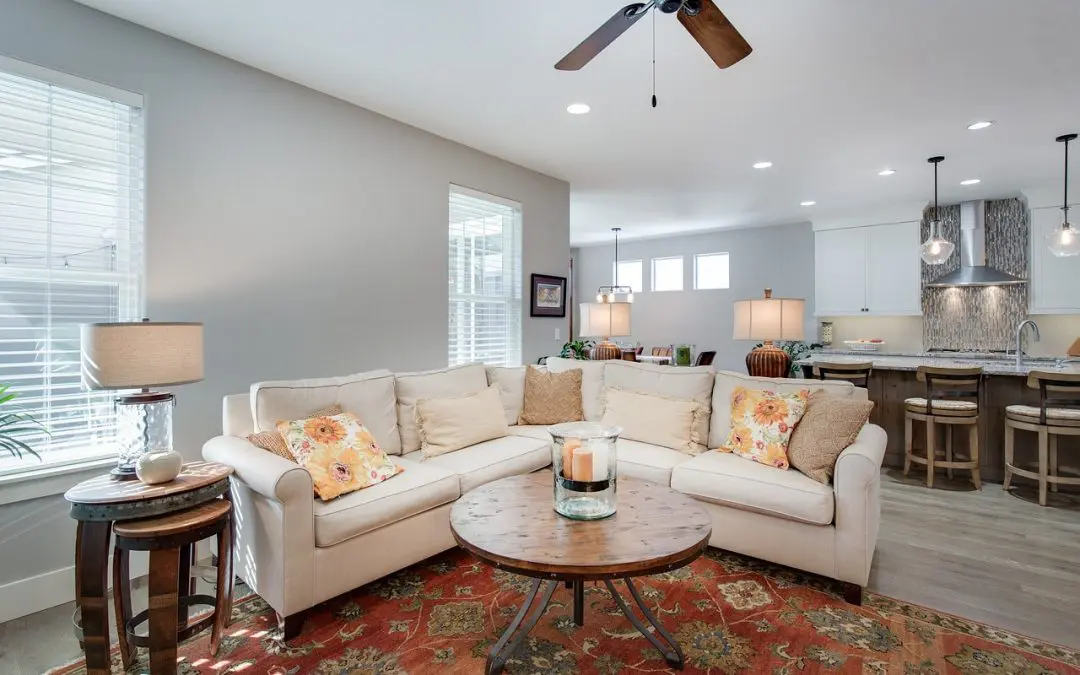Good indoor lighting makes your living spaces safer and more functional. Let’s look at a few ways to brighten your home. The right lighting can make a difference if you want to create a cozy atmosphere or increase productivity. Here are some tips to improve indoor lighting and the benefits that come with it.
Reasons to Improve Indoor Lighting
Adequate lighting is essential for your home. Beyond just being able to see properly, lighting can impact a space’s mood, ambiance, and functionality. Here are a few reasons why investing in quality lighting is a good idea.
Enhance Comfort
Properly lit spaces feel more inviting and comfortable, making it easier to relax and unwind after a long day.
Improve Indoor Lighting to Boost Productivity
Good lighting in work areas like your home office and kitchen boosts productivity and focus by reducing eye strain and fatigue.
Highlighting Décor
The right lighting accentuates your home’s features and décor, adding depth and visual interest to your interiors.
Safety and Security
Adequate lighting indoors enhances safety and security by reducing the risk of accidents and deterring potential intruders.
How to Improve Indoor Lighting
Here are five tips to brighten your home and improve your living spaces.
1. Layer the Lighting
Instead of relying on a single overhead fixture, incorporate multiple layers of lighting into your living spaces. Use ambient, task, and accent lighting to manage the brightness and mood of a room based on different activities and occasions.
2. Maximize Natural Light
Take advantage of natural light by keeping curtains and blinds open during the day. If you need privacy, use sheer or light-colored window treatments to diffuse sunlight evenly throughout the room. Mirrors reflect natural light and make smaller spaces feel larger and brighter.
3. Choose the Right Bulbs to Improve Indoor Lighting
When selecting light bulbs for your fixtures, choose energy-efficient LED or CFL bulbs. These bulbs consume less energy and provide better-quality light. They also last longer than traditional incandescent bulbs. Pay attention to the bulbs’ color temperature (measured in Kelvin) to achieve the desired warmth or coolness in your lighting.
4. Add Dimmers and Smart Controls
Dimmer switches and smart lighting systems allow you to adjust the brightness and color of your lights. This level of control enhances convenience and gives you the flexibility to create different atmospheres for various activities or times of day. Manage WIFi-enabled smart lighting from your phone or smart home hub.
5. Use Task Lighting
Task lighting, including desk lamps and under-cabinet lighting, is essential for performing activities like reading, cooking, and working on DIY projects. Position task lights strategically to minimize glare and shadows while providing adequate illumination for the task at hand.
Lighting is about experiencing your space in the best possible light. With these tips, you can create a well-lit and welcoming environment that enhances your home’s beauty and functionality.
FAQs
Can I retrofit my existing fixtures with LED or CFL bulbs, or do I need to replace the fixtures altogether?
You can often use LED or CFL bulbs without replacing the fixtures themselves. LED and CFL bulbs are available in various shapes and sizes to fit standard fixture sockets. However, compatibility can vary, so check the specifications of your fixtures and bulbs to ensure they are compatible.
Will implementing these lighting changes require hiring a professional, or can I do it myself?
The complexity of lighting updates will vary depending on the upgrades and your experience with electrical work. Homeowners with basic electrical skills and safety knowledge can make simple changes – such as replacing light bulbs or installing dimmer switches. However, more complex installations, such as rewiring fixtures, require the expertise of a licensed electrician for proper installation and compliance with building codes.
Will installing dimmer switches affect the compatibility of my existing light fixtures or bulbs?
Dimmer switches won’t affect your existing light fixtures or bulbs as long as they are dimmable. However, some older fixtures or bulbs may not be compatible with dimmer switches, leading to issues such as flickering or buzzing. Check the specifications of your bulbs to ensure they work with the new switches before installation.
How can I ensure that the lighting design in my home complements its architectural style and interior décor?
To create a uniform design, consider factors such as the style of your fixtures, the color temperature of the bulbs, and the placement of lighting elements. Choose fixtures that match or complement the aesthetic of your home, whether it’s modern, traditional, or eclectic. Understanding the function of each space will help you select lighting options to enhance the mood and ambiance you want to create.
How can I determine the best placement and spacing of lighting fixtures?
Consider factors such as the size and layout of the room, the intended use of the space, and the desired lighting effect to determine the optimal placement of lighting. In general, ambient lighting provides overall illumination, while it’s best to place task lighting to provide focused illumination for specific tasks or activities. Experiment with different placements and configurations to achieve the desired lighting effect.
TMK Inspections provides inspection services to homebuyers and sellers in Southeast Pennsylvania. Contact us to schedule an appointment.

